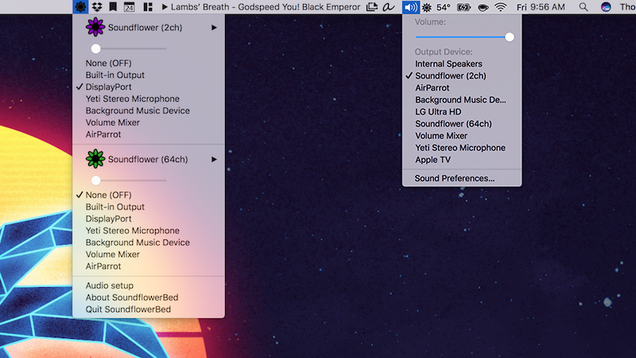I want to enable access for assistive devices programmatically. Have another way to do this that not use NSURL.prefPaneURL = NSURL fileURLWithPath:paths objectAtIndex:0. Apple has NOT provided any API to developers to programmatically enable accessibility for an app. So Mac OS 10.9 will prompt a dialog for end user permission to enable Accessibility when application uses accessibility APIs. Additionally User has to Relaunch the application after enabling Accessibility. Mac OS X 10.5.8. Open System Preferences. Universal Access. 'Enable access for assistive devices' (on bottom) Mac OS 10.9.x. Open System preferences. Security & Privacy. Accessibility.

| Click here to return to the 'Enable and disable Assistive Devices via Terminal' hint |
- From the Apple Menu, choose System Preferences. Click Universal Access. Deselect Enable Access for Assistive Devices. Close the Universal Access window.
- Enable Accessibility on Mac OS X 10.9 Mavericks Click the Privacy tab. Select Accessibility from the list. Click the lock icon to make changes. Check the box next to any Mizage apps (Divvy, ShortStop, etc) and System Events, if present.
 Excellent. I was looking at this problem, and I'm glad you got it sussed. I do however remove the part that says: [b]password pwd [/b] as I'm sure the script will prompt you for an admin password. I'm looking at this from a security point of view. Regards, Jay
Excellent. I was looking at this problem, and I'm glad you got it sussed. I do however remove the part that says: [b]password pwd [/b] as I'm sure the script will prompt you for an admin password. I'm looking at this from a security point of view. Regards, Jay---
-J-
tell application 'System Events'
set UI elements enabled to true
end tell
The user will get prompted to enter their credentials. No need to use the do shell script.
So, to be safe, it appears it would be better to: ...instead.
Argh - submitted too soon...Almost correct: The file should NOT contain the trailing newline. So, that means it should be: (with the extra '-n' switch passed to echo)
Sorry about that...
I figured out it would even be better to change that into:
sudo echo -n 'a' > /private/var/db/.AccessibilityAPIEnabled
sudo chmod 444 /private/var/db/.AccessibilityAPIEnabled
Not using the -n would leave an 'a' followed by a 'newline' inside the file instead of just the 'a'
It is useful to point out that System Preferences should not be open during this procedure. I discovered this while debugging a script that used the aforementioned code while I had the Accessibility prefpane open.
In Snow leopard I find that this does not work. It creates the hidden file, places the 'a' within, and in system preferences the 'enable access for...' is checked, but my applescripts still say 'access for assistive devices is disabled'. Only once I manually check the checkbox do the scripts work. This leads me to believe that something else, other than the .AccessibilityAPIEnabled file is happening under Snow Leopard.
My whole goal is to have a window/app management script that launches and places all of my startup apps/windows for dual monitors. I despise the automated mouse movement that comes with 'access for assistive devices' but I need this to move and resize the windows so in a single applescript i want to:
1. turn the access on
2. move and place the windows
3. turn the access off
| Developer(s) | Apple Computer |
|---|---|
| Stable release | |
| Operating system | Mac OS X |
| Type | System Utility |
| License | Proprietary |
| Website | https://www.apple.com/macosx/ features/universalaccess/ |
Apple Universal Access is a component of the Mac OS Xoperating system that provides computing abilities to people with visual impairment, hearing impairment, or physical disability.


Components[edit]
Universal Access is a preference pane of the System Preferences application. It includes four sub-components, each providing different options and settings.
Seeing[edit]
- Turn On/Off Screen Zooming
- Inverse Colors (White on Black, also known as reverse colors), ⌘ Command+⌥ Option+Control+8
- Set Display to Greyscale (10.2 onwards)
- Enhance Contrast
- Enable Access for Assistive Devices
- Enable Text-To-Speech for Universal Access Preferences
Enable Access For Assistive Devices Mac Os Versions
Hearing[edit]
- Flash the screen when an alert sound occurs
- Raise/Lower Volume
Keyboard[edit]
- Sticky Keys (Treat a sequence of modifier keys as a key combo)
- Slow keys (Delay between key press and key acceptance)
Enable Access For Assistive Devices Mac Os Sierra
Mouse[edit]
Mac Os Enable Access For Assistive Devices
- Mouse Keys (Use the numeric keypad in place of the mouse)
- Mouse Pointer Delay
- Mouse Pointer Max Speed
- Mouse Pointer enlarging
External links[edit]
Mac Os X Enable Access For Assistive Devices

